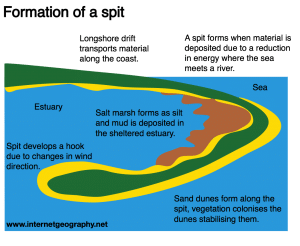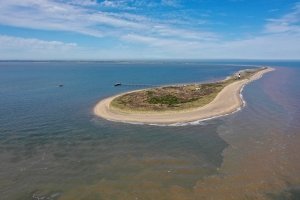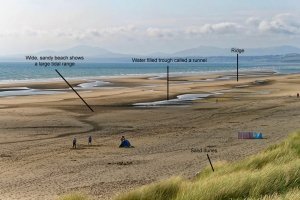Landforms of Coastal Deposition Flashcards
Where do sandy beaches typically form?
Click to View the Answer
Click to View the Question
A sandy beach is usually formed in a sheltered bays, where low energy, constructive waves transport material onto the shore.
Find out more about landforms of coastal deposition.
Where do sandy beaches typically form?
How are off-shore bars formed?
Click to View the Answer
Click to View the Question
Offshore bars form when sediment is transported on and off a beach. Destructive waves remove sediment from the beach and form the offshore bar.
Find out more about landforms of coastal deposition.
How are off-shore bars formed?
Produce an annotated diagram to show the main features of a spit.
Click to View the Answer
Click to View the Question
Find out more about landforms of coastal deposition.
Produce an annotated diagram to show the main features of a spit.
What is a spit?
Click to View the Answer
Click to View the Question
A spit is an extended stretch of beach material that sticks out to sea and is joined to the mainland at one end.
Find out more about landforms of coastal deposition.
What is a spit?
What are ridges and runnels?
Click to View the Answer
Click to View the Question
Ridges are areas of the beach that are raised. The dips are water-filled troughs called runnels.
Find out more about landforms of coastal deposition.
What are ridges and runnels?



